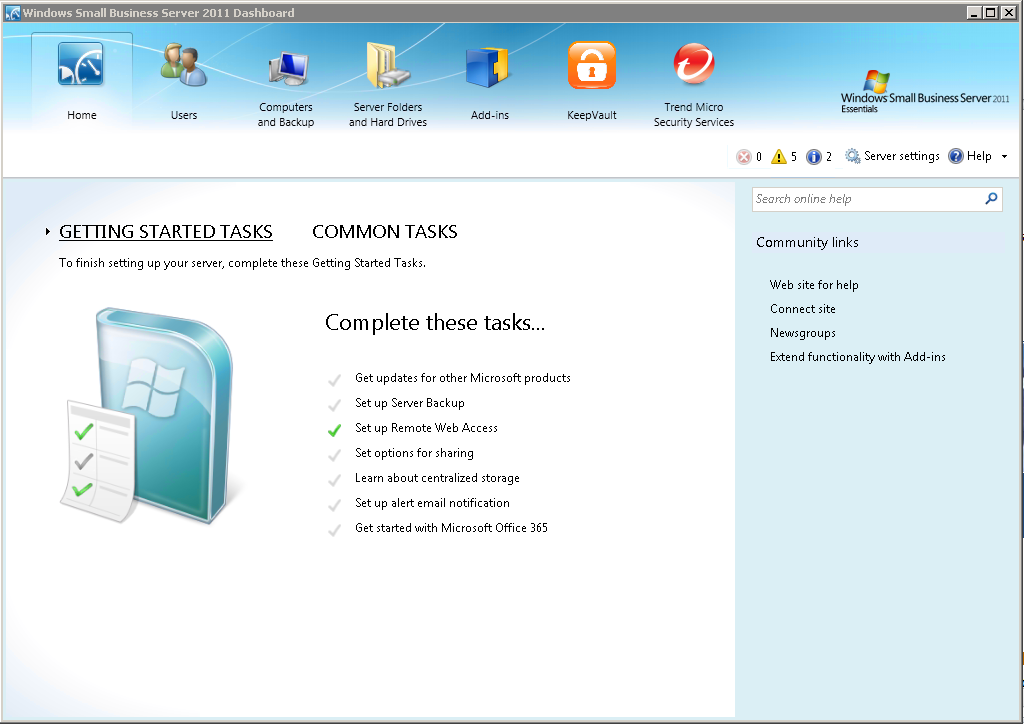July 14, 2011 News Thursday: SBS 2011 Essentials and “Project Concero” News
by STB Blogger
Windows Small Business Server 2011 Essentials Now Available In All Channels
On July 7, Microsoft announced the general availability of Windows Small Business Server 2011 Essentials (SBS 2011 Essentials). SBS 2011 Essentials is an easy-to-use, first-server solution designed and priced especially for small businesses (up to 25 users). It can seamlessly integrate into online services such as Office 365, cloud backup, and cloud management solutions.
SBS 2011 Essentials delivers enterprise-class technologies for data backup and restore, remote access, file and printer sharing, and quick connection to the cloud—in one fully integrated solution.
Customers can purchase a copy of the server through Volume Licensing, Retail, and from most OEM partners, with more offers and OEM products becoming available in the next few months.
Read the full announcement on The Official SBS Blog.
“Project Concero” is now officially the App Controller capability within System Center 2012
On July 12, Microsoft announced System Center App Controller 2012 as the official name for the component formerly code name “Concero.” This component had been showcased at the Microsoft Management Summit in Las Vegas, NV, this past spring.
Businesses increasingly depend on heterogeneous IT environments composed of public and private clouds as well as basic virtual and traditional physical resources. As a result, you need to seamlessly provision business applications across public and private clouds. App Controller 2012 empowers you with tools to provision and manage business applications across public and private cloud environments, while abstracting and integrating their view of the underlying IT resources.
More specifically, you can use App Controller 2012 to:
- Easily configure, deploy, and manage services through a highly intuitive service-centric interface, while using a library of standard templates.
- Create, manage, and move services using a web-based interface that presents a customized view of resources based on your role in the organization, and enables you to focus on managing services rather than servers.
- View private and public cloud services and virtual machines, and get granular control of components at each layer, along with the ability to track jobs and maintain a detailed history of changes.

